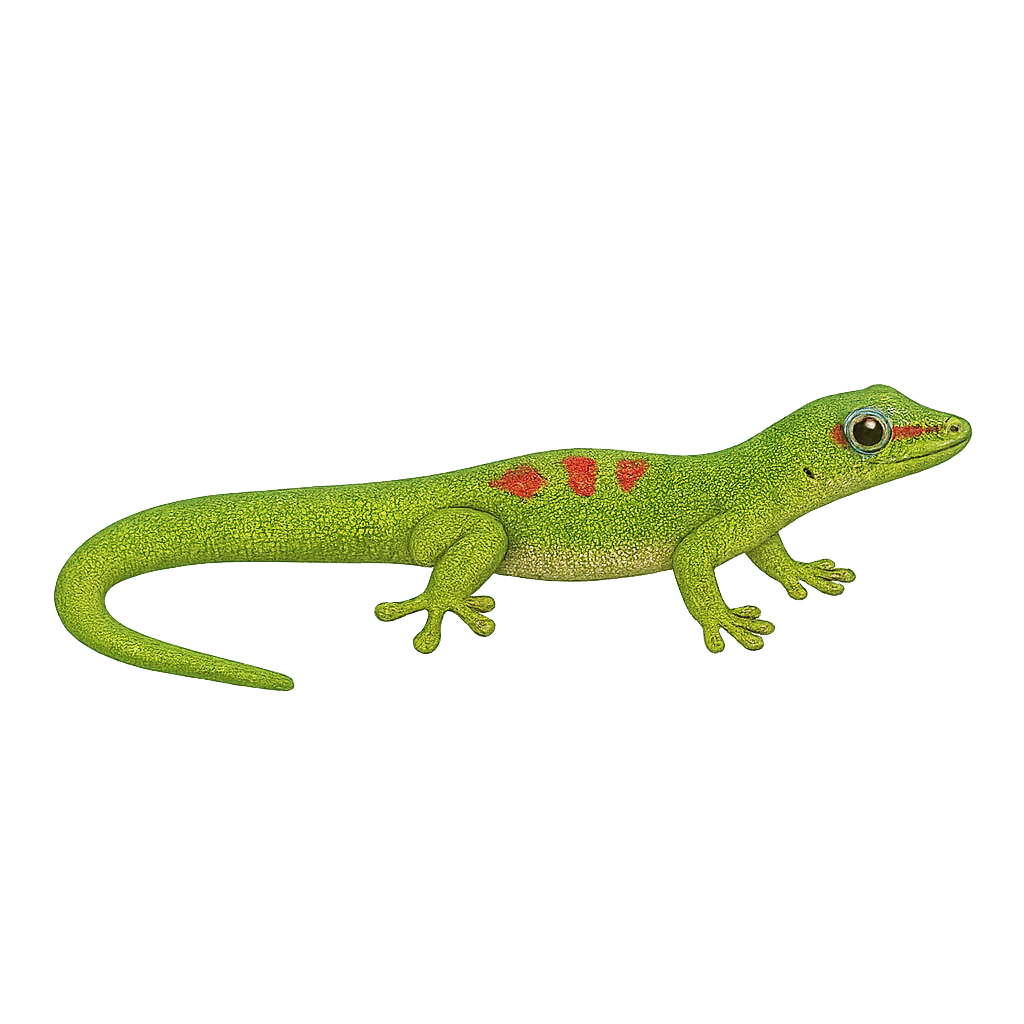Your wildlife photography guide.
Explore the gold dust day gecko in detail, study its behavior, prepare your shots.
Where to observe and photograph the gold dust day gecko in the wild
Learn where and when to spot the gold dust day gecko in the wild, how to identify the species based on distinctive features, and what natural environments it inhabits. The WildlifePhotographer app offers tailored photography tips that reflect the gold dust day gecko’s behavior, helping you capture better wildlife images. Explore the full species profile for key information including description, habitat, active periods, and approach techniques.
Gold Dust Day Gecko
Scientific name: Phelsuma laticauda

IUCN Status: Least Concern
Family: GEKKONIDAE
Group: Reptiles
Sensitivity to human approach: Tolerant
Minimum approach distance: 2 m
Reproduction period: April to May
Incubation: 60–90 jours
Births: April to May
Habitat:
tropical forests, urban areas, gardens, mangroves
Activity period :
Active during the day when temperatures are favorable, often seen basking in the sun.
Identification and description:
The Phelsuma laticauda, commonly known as the gold dust day gecko, is a small, brightly colored lizard native to Madagascar and nearby islands. It is easily recognizable by its vibrant green color, often adorned with golden or red spots on its back. Its size typically ranges from 10 to 15 cm, including the tail. This gecko is diurnal, meaning it is active during the day, and is often seen on tree trunks or the walls of human dwellings. It primarily feeds on insects but also enjoys nectar and fruits. Its ability to adapt to various environments, including urban areas, makes it a fascinating example of animal adaptation.
Recommended lens:
Macro – adjust based on distance, desired framing (portrait or habitat), and approach conditions.
Photography tips:
To photograph the Phelsuma laticauda, it is advisable to use a macro lens to capture the details of its bright colors and patterns. Approach slowly to avoid startling it, as although it is tolerant, it can quickly hide. Favor times of the day when natural light is abundant, such as morning or afternoon, to get well-lit shots. If possible, use a tripod to stabilize your camera and avoid motion blur.
The WildlifePhotographer App is coming soon!
Be the first to explore the best nature spots, track rutting seasons, log your observations, and observe more wildlife.
Already 1 432 wildlife lovers subscribed worldwide

